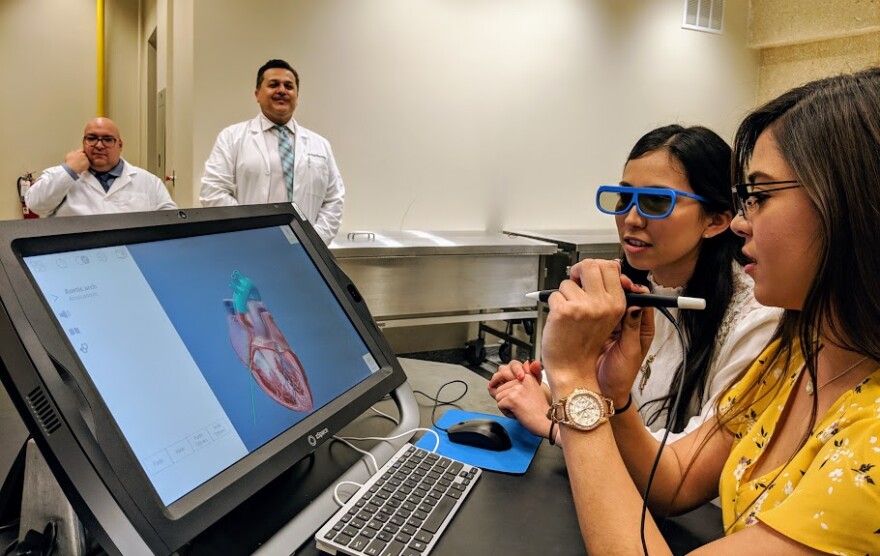Professors at the University of Texas at San Antonio are using 3D tech to show their undergraduates how interesting a medical career can be. But that's the easy part. The hard part is convincing them to spend some of that career in rural Texas.
Several dozen UTSA students came to class during Spring Break to learn about human anatomy by using a virtual reality program called zSpace.
A virtual heart hovered in the air as one student turned it around and upside down, then took a peek inside to see how it worked.
The students gathered around computers, put on 3D glasses, and then looked closer at the detailed imagery.
UTSA senior Britney Villegas, 21, was one of the students experiencing the augmented reality anatomy program for the first time.
"So you're going to click this button,” she explained to her classmates. “You're going to be able to manipulate the organ any way you want to. You can rotate it whichever angle you want, upwards, downwards."

Villegas wasn't required to be at this session in human anatomy. She wanted to be. She loves learning this way.
Eddie Hernandez, UTSA assistant professor in practice, teaches anatomy at the university, and he said that's a common reaction.
"Because they grew up in the technology world. They grew up with cell phones. They grew up with computers,” Hernandez said. “So just bringing these technologies into the classroom -- it's wonderful and fascinating to watch their expressions when they see that they're going to be doing something on a computer. Something virtual."

Hernandez and UTSA alum Dr. Hooman Mir, who uses this virtual reality program in his class at Western University of Health Sciences in California, have opened up these classes to all UTSA students. They want as many students as possible to get excited about the idea of working in healthcare, specifically those who might want to work in rural areas of Texas.
That's because there is a serious and growing doctor shortage in Texas. According to the State Office of Rural Health, 75 percent of Texas counties are either federally designated health professional shortage areas or medically underserved areas, or both. That shortage is most keenly felt in rural Texas, where at least twelve hospitals have closed since 2010.
Villegas said she intends to become a doctor, long before she started using a laser pointer to poke around in a 3D virtual heart, but she said this program makes learning more fun.
"Oh, yes. Much, much more. I like to work with my hands and stuff, and I think that's an advantage over just reading. And I think that allows for better study of different organs, and I think that will lead us to become better future physicians or whatever professions that we wish to chose."
Bonnie Petrie can be reached at Bonnie@TPR.org and on Twitter at @kbonniepetrie.





